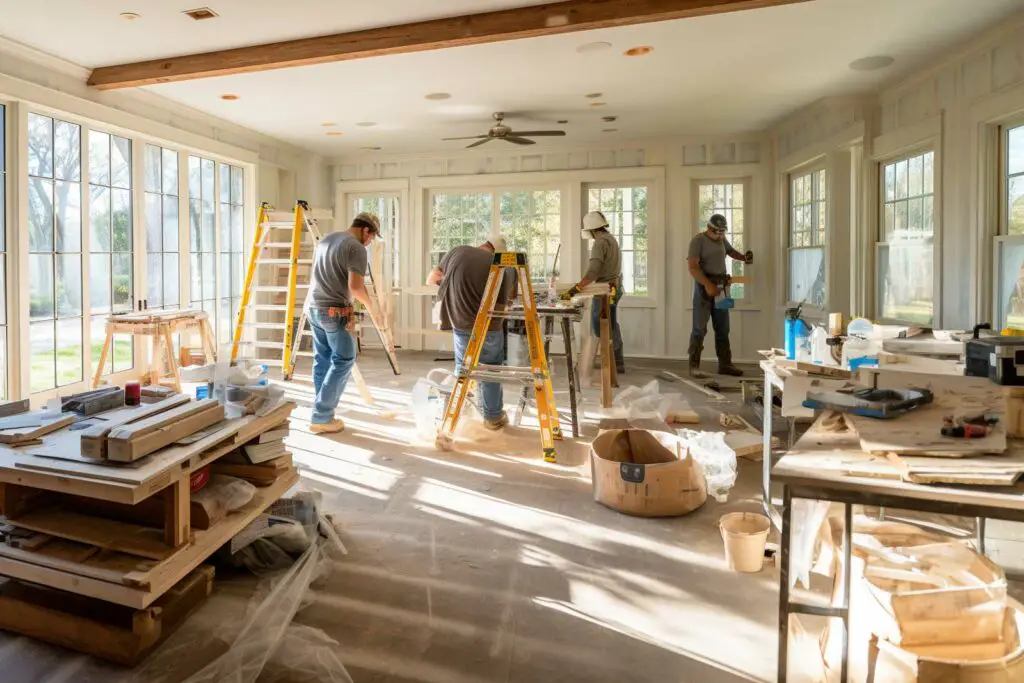Ready to take a sledgehammer to that outdated kitchen? Not so fast. What if I told you that the majority of home renovations overshoot their budgets and timelines, leaving homeowners stressed, broke, and full of regret?
This isn’t just a clickbait intro; it’s your wake-up call. Every second you delay in arming yourself with the right information is another dollar lost. Don’t just gamble with your hard-earned money and your home’s value. Here, we’re diving into the nitty-gritty of what you MUST know before you tear down that first wall.
We’re unpacking all the details for the critical query “What I Wish I Knew Before I Renovated My Home.” Whether you’re looking for design inspiration or ROI calculations, this guide has it all.
Still on the fence? Don’t skip a beat. Let’s address the burning questions, such as:
- How can you bulletproof your budget without compromising quality?
- What timeline hacks can save you from renovation purgatory?
- How do you avoid planning blunders that lead to construction calamities?
- What are the red flags when vetting contractors?
- Do you really have to plan for future maintenance during your current reno?
So, if you’re a homeowner, DIY enthusiast, or even a real estate professional hungry for the real story behind successful home renovations, this guide is your roadmap. Your dream home is waiting at the end of this post—let’s get you there.
- Always Budget for More Than the Initial Quote: Nearly 3 out of 4 home renovations go over budget; include a 20-30% contingency fund.
- Timelines Will Likely Extend: About 9 out of 10 renovations take longer than expected; plan for delays and buffer your timeline.
- Consult an Architect for Structural Changes: Before demolition, get professional advice on any structural modifications to ensure safety and compliance.
- Meticulous Planning is a Must: A detailed plan, including electrical, plumbing, and lighting, should be finalized before starting any demolition.
- Vet Your Contractors Rigorously: Always check reviews, insist on written contracts, and get multiple estimates to avoid financial surprises and poor workmanship.
- Plan for Long-Term Maintenance: Assume that additional repairs and adjustments will be needed post-renovation and allocate resources accordingly.
- Don’t Lose Sight of Your Ultimate Goal: Despite challenges and setbacks, stay focused on your vision and avoid getting bogged down by minor issues.
- Older Homes Come with Unforeseen Challenges: Prepare for hidden complications like asbestos, water leaks, and outdated wiring especially in older properties.
- Design Spaces with Longevity in Mind: Opt for durable finishes and versatile spaces that can adapt to future needs, especially if you have or plan to have children.
- Your Current Needs Overrule Future Resale Value: While it’s tempting to renovate for future buyers, prioritize your immediate needs and lifestyle.

Anticipate Higher Costs Than Initially Quoted
Whether you’re a first-time homeowner or a seasoned pro, underestimating remodeling costs can derail your project. Tackling a renovation is both an exciting and nerve-wracking endeavor. Let’s dive into ways to avoid financial surprises and stay within your budget.
Obtain Several Written Estimates From Different Contractors For a Well-Rounded View Of Costs
Don’t settle for the first quote you receive; instead, collect at least three written estimates from different contractors. This practice will give you a well-rounded view of potential costs and allow you to make a more informed decision. Additionally, it provides an opportunity to gauge the professionalism, work ethic, and reliability of various contractors.
Plan a Contingency Budget, Adding 20-30% Over The Initial Quotes To Cover Unexpected Expenses
Renovation projects are notorious for unexpected expenses. To protect yourself from unforeseen costs, create a contingency budget in addition to the contractor’s quote. Add 20-30% of the initial cost estimate to cover potential additional costs, including any surprises that could come up during the renovation process, such as new house or old house issues.
Account For Overlooked Expenses Such As Waste Disposal, Storage Rentals, And Permit Fees
Items not included in your contractor’s quote can quickly add up, contributing to budget overruns. Consider overlooked expenses like waste disposal, storage rentals, and permit fees. Factor these additional costs into your overall budget to avoid unpleasant financial surprises during the renovation process.
Include Real-Life Case Studies That Demonstrate The Risks Of Underestimating Budgets
One homeowner’s story told of a simple bathroom remodel that ended up costing twice the initially quoted amount. This situation illustrates the risks and financial implications of underestimating a remodeling budget. Learning from the experiences of others can help you avoid the same costly mistakes, and reinforce the importance of thorough preparation and budgeting.
Offer Strategies For Identifying Cost-Effective Suppliers And Quality Materials
Sourcing cost-effective suppliers and quality materials can significantly impact your remodeling budget. Do your research and ask for recommendations from professionals in the home improvement industry, fellow homeowners, and even social media forums. Prioritize quality over cost for long-lasting results and materials that will enhance the value of your property.
Provide Guidelines On Effectively Negotiating With Contractors For Budget-Friendly Rates
Negotiating with contractors can help you secure budget-friendly rates. Understand each contractor’s pricing structure and be prepared to propose alternative materials or methods to reduce cost. It’s essential to communicate your budget limitations clearly while maintaining a respectful and professional relationship with the contractor.
By keeping these tips in mind, you can confidently embark on your home renovation journey, better prepared for the potential cost increases and fully equipped to create your dream space.

Factor in Extended Timelines for Project Completion
You’re ready to dive into your home renovation, excited to create a space you love. Before starting, it’s essential to acknowledge the reality of project timelines. In this section, we’ll explore how to factor in additional time for project completion and manage expectations throughout the process.
Acknowledge That Project Durations Often Extend Beyond Initial Estimates Due To Various Delays
We all want to believe that our renovation project will be completed on time, but it’s important to recognize that delays are not uncommon. Construction schedules can be disrupted by unexpected issues like unforeseen structural problems, permitting delays, or changes in project scope. Be prepared to accommodate extra time for addressing these challenges and adjusting your plans.
Include a Buffer in The Project Timeline To Accommodate Weather Disruptions, Supply Chain Issues, Or Labor Strikes
Seasoned homeowners understand that even the best-laid plans can be thrown off by factors outside of their control, like weather disruptions, supply chain issues, or labor strikes. To be on the safer side, it’s a good idea to incorporate a buffer in your project timeline. This extra cushion will help you navigate any unforeseen obstacles without feeling stressed or overwhelmed.
Recommend Ordering Materials And Fixtures Well in Advance To Compensate For Potential Lead Times
In my first renovation project, I underestimated the lead times for purchasing custom cabinetry. This costly oversight caused delays in both the project’s timeline and budget. To avoid similar setbacks, be proactive and order all materials and fixtures well in advance. This will ensure that you’re ready for construction when the time comes, and your project doesn’t get delayed by vendor or shipping issues.
Prepare For The Likelihood That Original Deadlines Will Not Be Met And Adjust Expectations Accordingly
Whether you’re tackling your first home renovation or building your dream house from scratch, it’s essential to accept that original deadlines might not be met. Approaching your project with flexibility and realistic expectations will help you stay on top of challenges while managing the necessary adjustments. Remember, the final outcome is the ultimate goal, and sometimes great work takes time.
Include Anecdotal Accounts Of Projects That Suffered From Timeline Overruns And The Lessons Learned
As you embark on your renovation journey, learn from others who’ve faced timeline challenges and emerged wiser. From running into permit issues to dealing with contractor miscommunications, these stories offer valuable insights into navigating obstacles while maintaining your sanity. Keep your eye on the prize and remember that, in the long run, a beautifully renovated space is worth the extra time and effort.

Thorough Planning is Crucial Prior to Demolition
Embarking on a home renovation project can be both exciting and daunting, especially for first-time homeowners. To ensure a smooth process and avoid costly mistakes, it’s critical to invest time and effort in thorough planning before starting any demolition work. Let’s explore some important aspects of planning that can make all the difference in your renovation journey.
Seek Advice From An Architect Regarding Any Structural Modifications To Ensure Safety And Compliance
Modifying an old home or a new house may require structural alterations, which can affect the overall safety and integrity of the building. Consulting an architect is essential as they possess the knowledge and expertise to guide you through potential issues and ensure compliance with building codes and regulations. Whether you’re moving walls, adding rooms, or altering the floor plan, don’t skip this crucial step.
Develop Detailed Plans For Electrical Layouts, Plumbing Routes, And Lighting Schemes
A well-thought-out plan for electrical, plumbing, and lighting infrastructure is vital to the success of your home renovation project. This includes knowing where to place outlets, switches, light fixtures, and plumbing fixtures, as well as understanding the necessary route for pipes and wiring. Failing to plan these properly can result in costly changes and disruptions later on. Creating detailed plans ahead of time allows you to avoid such headaches and setbacks.
Decide On All Finishes, Textures, And Fixtures Before Demolition Begins To Avoid Last-Minute Decisions
Complete your selection of finishes, textures, and fixtures before starting demolition work. This can save you from making hasty last-minute decisions that could lead to inconsistent design choices and added costs. Keep in mind that your chosen finishes and textures will impact the overall aesthetic and functionality of the renovated spaces, so invest time in understanding the options and making informed decisions.
Arrange Demolition Activities In a Logical Sequence That Aligns With The Renovation Plan
Organizing demolition activities in a logical order will streamline the renovation process and minimize disruptions. Break down the demolition tasks into manageable chunks, and tackle them in a predetermined sequence aligned with your renovation timeline. This helps ensure a smooth transition between each stage of the project and keeps your renovation on track.
Prioritize Completing One Room Fully Before Moving On To The Next To Minimize Disruption
To lessen the chaos and disarray that often comes with home renovations, try focusing on completing one room at a time. This allows you to minimize disruption to your daily life and offers a measure of privacy during the renovation process. It also provides a sense of accomplishment and motivation to keep pushing forward on the project.
Projects That Faced Complications Due To Insufficient Planning
Learning from the mistakes of others can help you avoid similar pitfalls in your own project. For example, a friend of mine got halfway through renovating her kitchen when she realized that the newly installed light fixtures wouldn’t work with her chosen ceiling height. This costly mistake could have easily been avoided with more thorough planning (thank God for being able to return stuff to Home Depot!). Don’t let yourself fall into similar traps—plan ahead and cover all your bases before diving into demolition.
By adhering to these guidelines for thorough planning, you’ll have a much smoother renovation experience and ultimately create a space that truly reflects your personal style and needs.
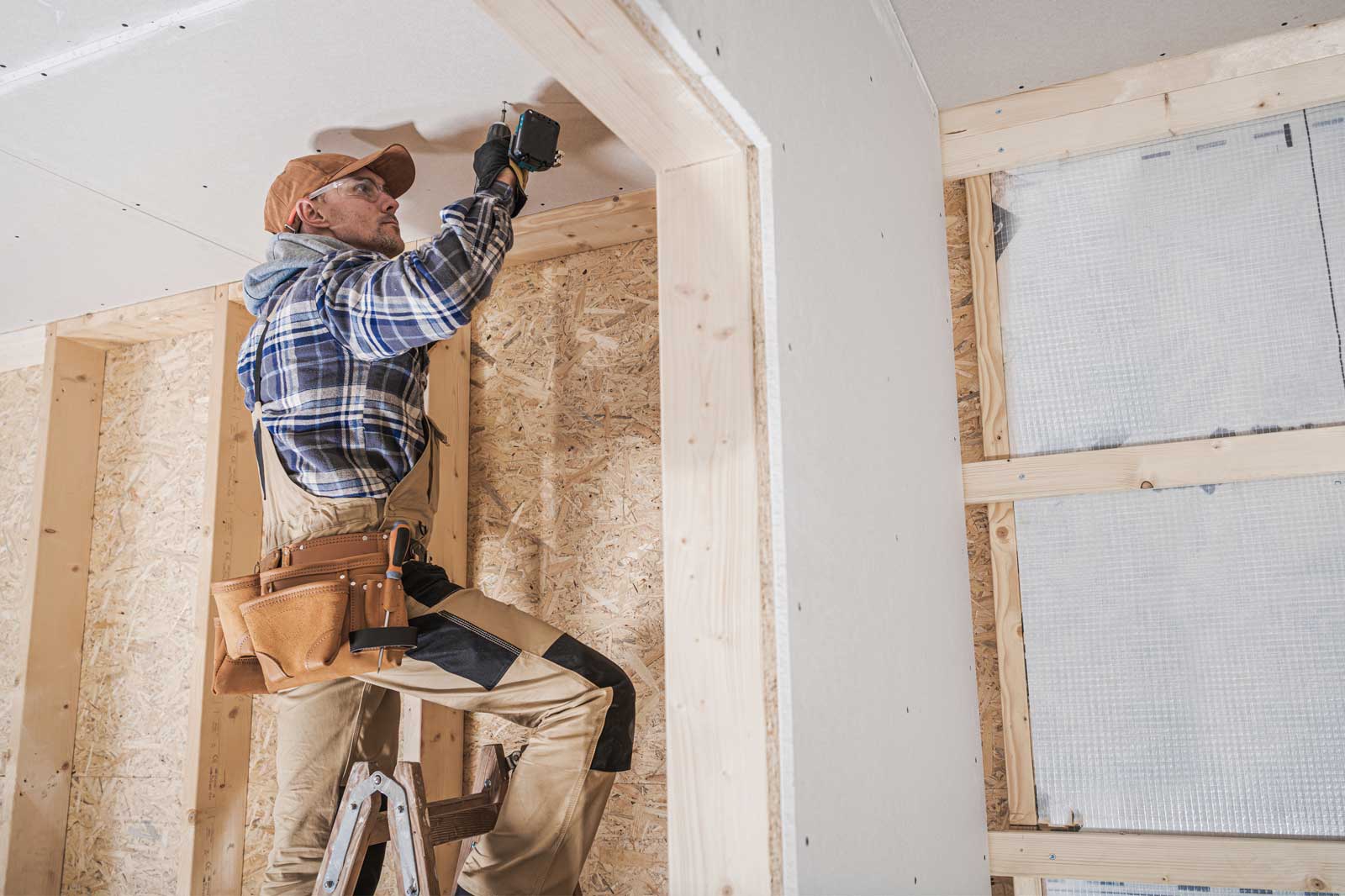
Rigorously Screen And Evaluate Your Contractors
Embarking on a home renovation project can be both exciting and nerve-wracking, especially if it’s your first time. To ensure a smooth and successful project, it’s crucial to find and work with good contractors. In this section, we’ll share some valuable tips on how to rigorously screen and evaluate your contractors, helping you avoid potential pitfalls and maximize the outcome of your renovation.
Use Referrals And Online Reviews To Pre-Screen All Specialized Contractors
One of the most effective ways to find trustworthy and skilled contractors is by asking for referrals from friends, family, or colleagues who have completed similar projects. In addition, don’t hesitate to read online reviews from sites like HomeAdvisor or Angi. This will help you to pre-screen potential candidates and create a shortlist of specialized contractors to interview in detail.
Insist On Written Contracts And Detailed Itemized Estimates To Avoid Financial Surprises
Before engaging any contractor, make sure you have a written contract and detailed itemized estimates to avoid unexpected costs. The contract should clearly outline the scope of work, project timeline, materials to be used, payment terms, and any contingencies or allowances. This will help you to manage your budget and have a better understanding of the overall costs of the project.
Opt For Hiring a General Contractor To Oversee Project Management And Coordination Between Trades
Hiring a reliable and trustworthy general contractor can be a game-changer for your home renovation project. A general contractor is responsible for overseeing project management, coordinating with various trades, obtaining permits, and ensuring efficient progress. This way, you can focus on your day-to-day responsibilities while the general contractor takes care of the nitty-gritty details of your renovation.
Foster Open Lines Of Communication Among All Team Members For Smoother Project Flow
Maintaining open lines of communication among all team members, including the general contractor, sub-contractors, and designers, is crucial for a smoother project flow. Regular meetings and progress updates help to expedite decision-making, resolve potential issues, and ensure that everyone is on the same page. A well-coordinated team makes a significant difference in the overall success of your home renovation project.
Projects Gone Awry Due To Inadequate Or Dishonest Contractors
Despite your best efforts, not all home renovation projects go smoothly. One example that comes to mind is a friend who hired an inexperienced contractor based solely on a low bid. This contractor’s work proved to be subpar, leading to costly and time-consuming repairs after the fact. Avoid a similar situation by sharing such cautionary tales with your team, emphasizing the importance of thorough contractor evaluation and good project management.
By rigorously screening and evaluating your contractors, implementing written contracts, leveraging the expertise of a general contractor, fostering open lines of communication, and learning from others’ experiences, you increase your odds of a successful home renovation.

Account for Long-Term Maintenance and Repairs
You’ve always dreamed of renovating your home, but there’s more to it than just the design and construction. Proper planning for long-term maintenance and repairs is crucial. Let’s dive into some key considerations to help you prepare for the unexpected and ensure your renovated space stays in tip-top shape.
Assume That Unexpected Issues Will Surface, Meaning Additional Repairs
No matter how thorough your renovation process is, there’s always a chance that unforeseen issues will arise. This could range from discovering water damage in an old house to a faulty wiring job done by a previous contractor. It’s essential to keep this in mind and set aside additional resources for potential repairs. You don’t want to be caught off guard by extra expenses that might put a strain on your budget.
Allocate Additional Time and Financial Resources for Post-Move-In Adjustments and Fixes
After you’ve moved into your newly renovated space, you may find that certain aspects aren’t quite right or need additional tweaks. The tile installer may have missed a spot, or the lighting fixtures might need calibrating. It’s wise to allocate extra time and financial resources to handle these small fixes. This ensures a smoother transition into your improved living space and ultimately enhances your overall satisfaction with the renovation.
Include Routine Tasks Like Resealing Surfaces, Touching Up Paint, and Calibrating Lighting Fixtures
Routine maintenance is a key aspect of preserving the longevity and functionality of your renovated space. Regular tasks such as resealing surfaces, touching up paint, and calibrating lighting fixtures may seem minor but can significantly impact your satisfaction and the value of your property in the long run. By staying on top of these tasks, you can prevent larger, more expensive issues in the future.
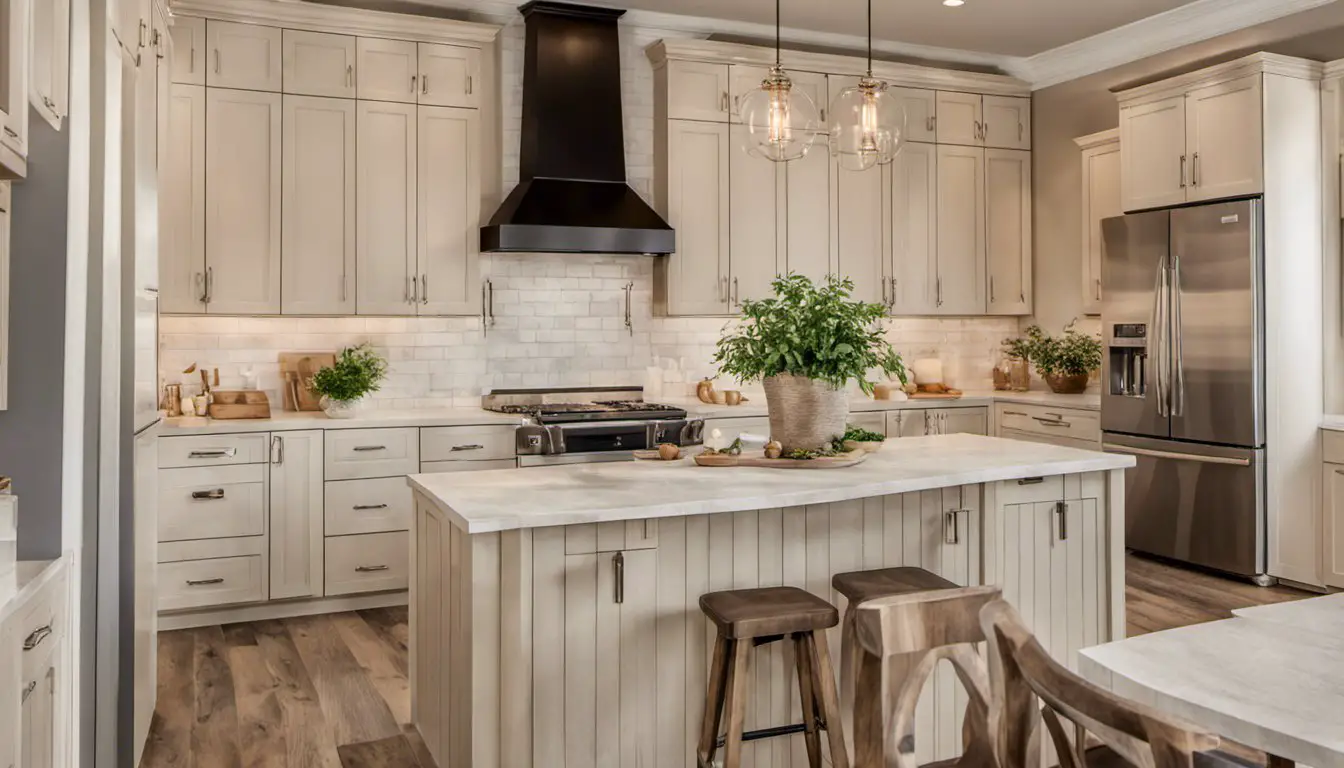
Keep Your Ultimate Goal in Sight
Imagine getting started on a home renovation journey only to lose sight of the original vision. It actually happens more often than you might think. As a homeowner or even a renovation professional, it’s crucial to keep your ultimate goal in mind. In this section, we’ll discuss several key strategies to help you stay focused on your renovation objectives.
Remain Steadfast in Your Vision, Especially When Facing Challenges and Setbacks
Challenges and setbacks are part of the process, whether you’re tackling your first renovation or partnering with a seasoned interior designer. However, it’s crucial to remain steadfast in your vision, even when you face obstacles. Remind yourself of the end goal and make adjustments as necessary, but never lose sight of your desired outcome.
Avoid Getting Bogged Down by Minor Imperfections That Do Not Affect the Overall Outcome
It’s easy to get caught up in the little details, but try not to nitpick every minor imperfection. Remember, good contractors know that some flaws are unavoidable. Focus on the bigger picture and prioritize tasks that directly impact the overall renovation result. Don’t let small imperfections derail your progress.
Revisit the Initial Reasons and Motivations for Undertaking the Renovation
When you begin to question your decision to renovate, recall the initial motivations and reasons for undertaking the project. Whether it’s updating a dated interior or tackling a necessary repair, revisiting your original intentions can help keep you on track and reinforce your commitment to seeing the project through.
Celebrate Incremental Successes to Maintain Morale and Momentum
Keeping the momentum going is essential for successful renovations. Avoid tunnel vision by celebrating incremental successes along the way – whether it’s finishing a room or receiving positive feedback from a family member. Acknowledging these milestones can boost morale and maintain motivation throughout the project.
Include Stories of Homeowners Who Lost Focus and the Consequences They Faced
Although it’s good to be optimistic, there’s also value in learning from others’ mistakes. Listening to stories of homeowners who lost focus can serve as a cautionary tale, reminding you of the importance of staying on track. A friend of mine once got carried away with endless improvements during a renovation but ultimately regretted them because they didn’t contribute to the end goal.
Keeping your ultimate goal in sight throughout your home renovation is essential for success. By remaining steadfast in your vision, avoiding distractions from minor imperfections, revisiting initial motivations, celebrating incremental successes, and learning from others’ experiences, you can keep your project on the right track and make the best decisions for your home.
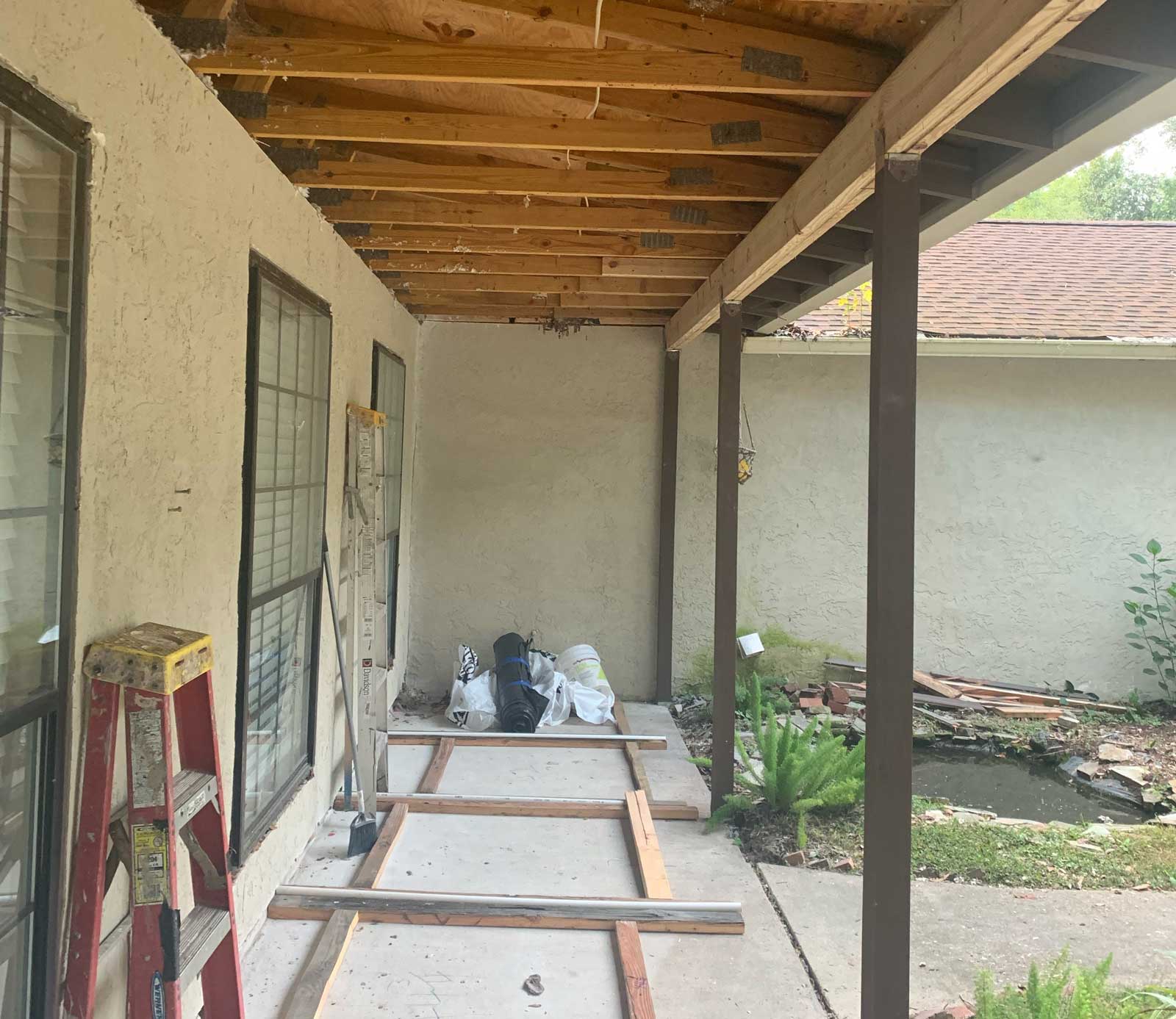
Brace for Unforeseen Challenges in Older Homes
Renovating an old home can be an exciting journey filled with endless possibilities. However, it’s essential to prepare for unexpected challenges that come with updating an older house. In this section, we’ll discuss strategies to help you navigate these obstacles with confidence and ease.
Prepare for Hidden Complications Like Asbestos, Water Leaks, Or Outdated Wiring
Older homes may harbor hidden complications that can derail your renovation plans. Issues like asbestos, water leaks, and outdated wiring can not only drive up costs, but also pose significant health and safety risks. As a homeowner, it’s crucial to be aware of these potential problems and address them promptly.
To tackle these challenges, consider hiring a professional to inspect and identify potential hazards before you begin the renovation process. In the event that problems like asbestos are discovered, always consult with a certified removal specialist to ensure proper handling and disposal.
Conduct a Comprehensive Structural Inspection Before Finalizing Any Design Plans
A comprehensive structural inspection by an experienced structural engineer should be on top of your renovation checklist. Examining the foundation, support beams, and overall structural integrity of your older home can reveal critical issues that, if unaddressed, could lead to costly repairs down the line.
An inspection can also provide valuable insights for your design plans. For example, your structural engineer may identify a load-bearing wall that shouldn’t be altered or suggest rerouting pipes or electrical wiring. These discoveries can help you make informed changes to your renovation plans while avoiding unnecessary setbacks.
Consult Neighbors Who Have Undertaken Similar Projects for Firsthand Insights and Advice
Your neighbors can be a valuable resource when renovating an older home. Chances are, they’ve faced similar challenges and can share their experiences and insights. They may even have recommendations for trusted contractors or suppliers in your area.
Take the time to reach out to neighbors who have undertaken similar renovation projects and ask them about their experiences. Glean from their wisdom and use their firsthand advice to navigate potential pitfalls more effectively.
Adopt a Flexible Approach to Handle Unexpected Issues Efficiently as They Emerge
Even with thorough planning and preparation, it’s almost inevitable that unexpected issues will emerge during the renovation process. Whether it’s a hidden water leak or an unforeseen gas bill, these challenges can quickly throw a wrench in your plans.
To minimize stress and keep your project on track, maintain a flexible approach to problem-solving. When surprises arise, take a deep breath, assess the situation, and adapt your plans accordingly. Remember, every obstacle you face is an opportunity to learn and become a more resourceful renovator.
Share Anecdotes About Unexpected Discoveries in Older Homes and How They Were Managed
Unexpected discoveries can be one of the most memorable aspects of renovating an older home. For example, during a friend’s kitchen renovation, they discovered a perfectly preserved kitchen sink hidden behind a wall. While it initially seemed like an obstacle, the homeowners chose to include this unique feature in their new design, celebrating the history of their home.
As you embark on your renovation journey, remember to embrace these surprising discoveries, and use them as an opportunity to inject personality and character into your updated space. After all, these unexpected finds are part of what makes older homes so special and cherished.

Optimize Spaces for Children
You’ve decided to renovate your home, and you’re aware that creating child-friendly spaces is crucial. Before diving into the project, consider these essential tips on designing spaces that will grow with your children and withstand their daily activities. So let’s dive right into some sub-sections to help you optimize those spaces for your family.
Prioritize Versatile and Adaptable Spaces That Can Evolve with Children’s Needs
When designing your rooms, focus on creating versatile and adaptable spaces that can evolve with your children as they grow. Remember that your children’s needs will change over time, and it’s best to make sure their spaces will adapt. For example, your living room can be transformed from a play area for young children to a relaxed teen hangout space by strategically placing furniture, implementing storage solutions, and adding appropriate light fixtures.
Choose Durable Finishes That Are Also Easy to Clean and Maintain
Selecting durable finishes for your home is essential when renovating with children in mind. From flooring to countertops, opt for materials that can withstand wear and tear while being easy to clean and maintain. A practical idea would be installing laminate flooring instead of soft carpets in the busy play areas.
When my kids were little, they spilled a drink on our beautiful dining room rug, leaving a permanent stain that we learned to live with. A durable, easy-to-clean alternative like a laminate floor would have been a more practical choice in that situation.
Avoid Over-Customizing Rooms to Suit Current Tastes That Children Might Quickly Outgrow
It’s tempting to design a room specifically for your kids’ current tastes, but they may quickly outgrow these preferences. Instead, aim for timeless and versatile designs that can easily transition with your children. For example, you can add their favorite colors, patterns, or characters in the form of removable wall decals or replaceable bedding and curtains in their bedroom.
It’s essential to keep the core elements of the room neutral and timeless to last through various stages of your child’s development. This strategy also saves you a significant amount of time and money, as you won’t have to constantly revamp the room.
Renovations That Successfully Cater to Children’s Requirements
When planning a renovation, you must consider those extra features that cater to your children’s specific needs. For instance, if your current home has a small kitchen, you might want to create an open-concept living and dining area. This layout not only allows more natural light to flow through the space, but it also enables you to keep a watchful eye on your children as they play in the living room while you’re preparing meals.
Incorporating thoughtful features to improve safety and functionality is also critical in designing child-friendly spaces. Little Bit’s bedroom, for example, could benefit from built-in storage solutions to maintain order and minimize clutter—an essential aspect of ensuring a calm and organized environment for your children.
When you keep this kind of stuff in mind while you’re wowrking on your reno, you’ll be on your way to creating a home that’s not only beautiful but also caters to the ever-changing needs of your growing family. Enjoy the journey and the remarkable transformation of your home!
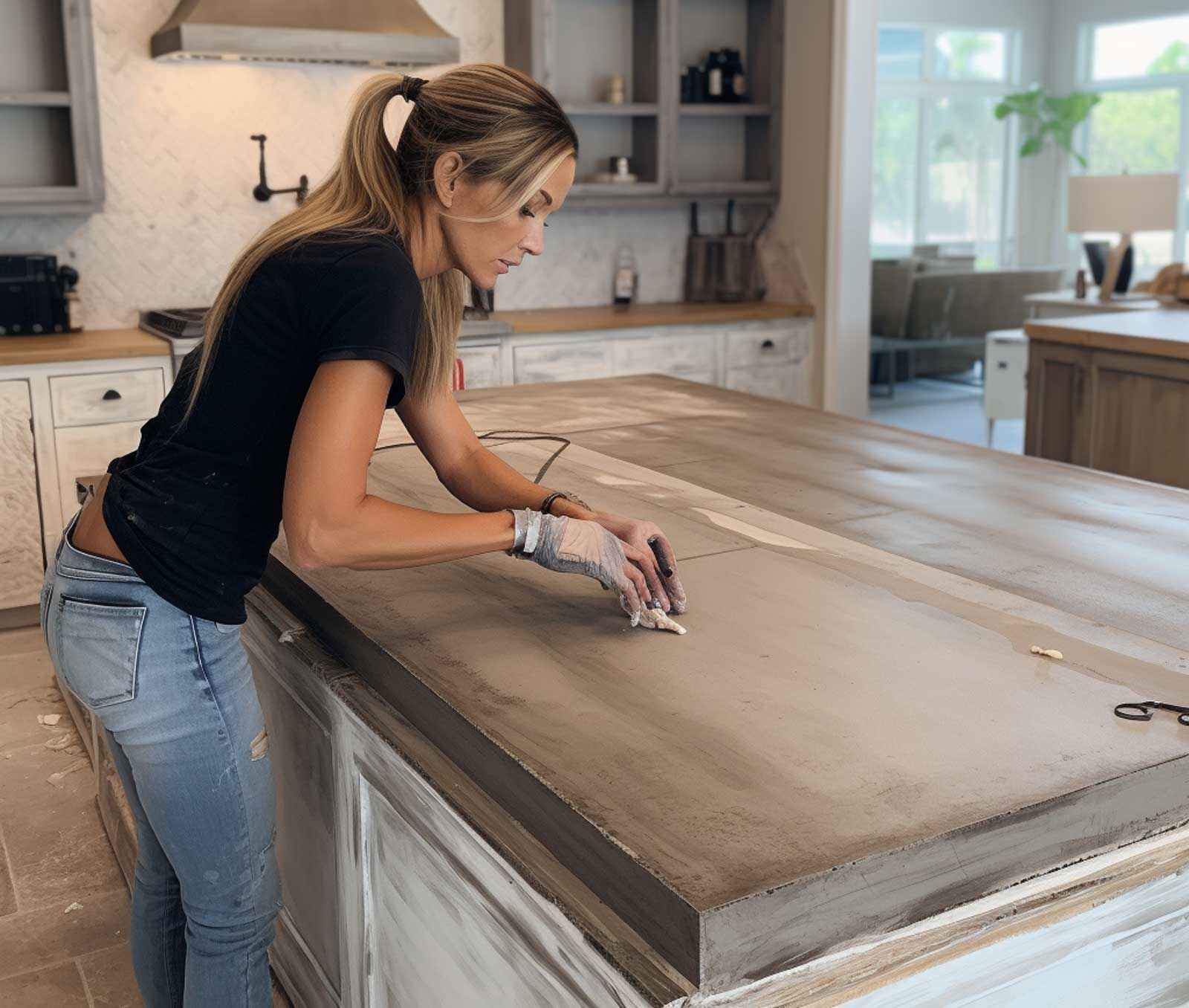
Prioritize Your Immediate Needs Over Future Resale Value
Chasing the dream of the perfect home renovation is a thrilling ride, but sometimes it’s easy to get lost in the excitement and forget about your immediate needs. So, before you dive headfirst into your renovation project, take a step back and refocus on what matters most: making your house a home you’ll love for years to come. Here’s how you can prioritize your immediate needs while planning your Home Renovation Project.
Focus on What Suits Your Needs Now, Rather Than What Hypothetical Future Owners Might Prefer
It’s tempting to plan your renovation around what you think will sell faster or for more money, but what’s more important is making your home a place where you can truly feel comfortable and happy. Consider adapting your Floor Plan, selecting materials, and budgeting with your current lifestyle in mind. Write a list of your Big Decisions and rank them based on your priority. This way, you’ll create a home that suits your needs and will make a Big Difference in your day-to-day life.
Invest in Important but Less Visible Upgrades Like Quality Wiring and Roofing
While a beautiful exterior or high-end appliances might be tempting, investing in the less visible, yet essential parts of your home can make a more significant impact. Quality wiring and a well-maintained roof can save you Extra Money in the long run and provide a safe, efficient living environment. Keep these important aspects in mind as you plan and budget for your Home Improvement Project.
Incorporate Universally Beneficial Features Such as Ample Storage and Neutral Finishes
Although it’s essential to cater to your tastes and preferences, incorporating versatile features is a smart move. Ample storage and neutral finishes, for example, are universally appreciated by homeowners and potential buyers alike. So while you customize your space, consider these elements to create a balance between personalization and practicality.
Share Stories of Homeowners Who Compromised Their Immediate Needs for the Sake of Future Resale Value
When I did my home renovation, I was fixated on maximizing future resale value. This was completely misguided and lead me to approach where I made some bad decisions that didn’t meet my immediate needs. Ultimately, I found myself constantly frustrated with my own home. This too caused budget overruns, and lots of headaches.
Take it from me – learn from my experience and prioritize your needs over potential future gains. Prioritizing your happiness and satisfaction in your present living situation will make your Entire House feel more like your home, and that’s something money can’t buy.
Remember, there’s no perfect recipe for a successful home renovation, but keeping your immediate needs at the forefront of your planning will bring you one step closer to creating a space you’ll love calling home.
